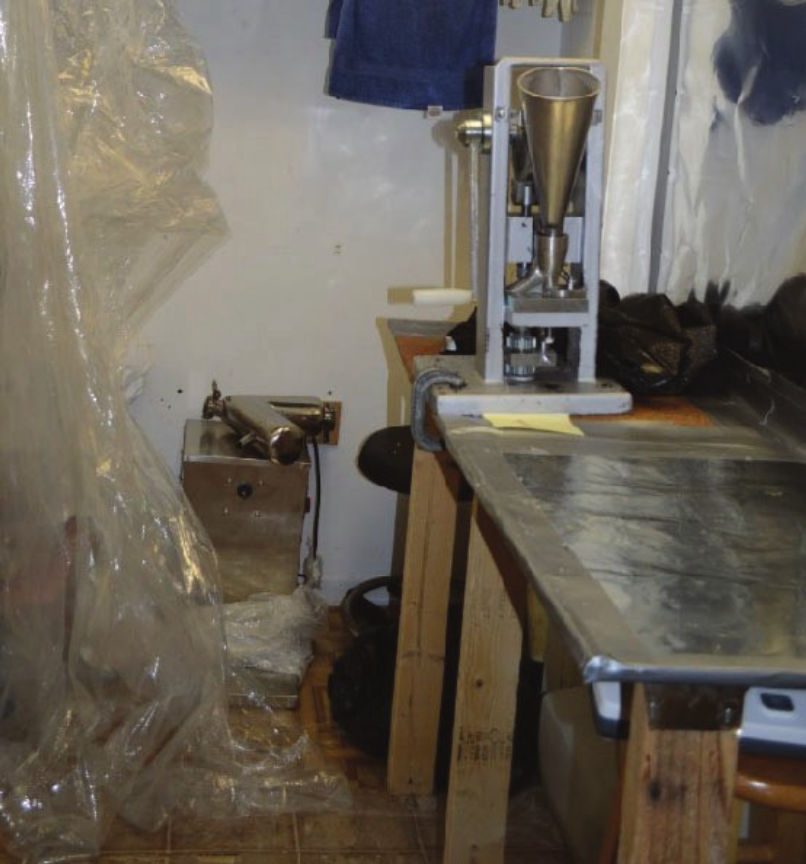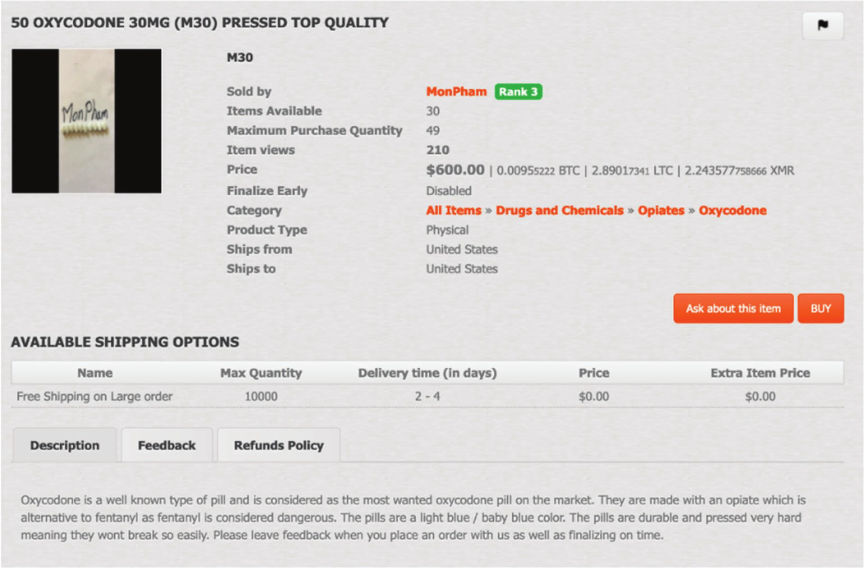Three members of a Pennsylvania family pleaded guilty to a conspiracy involving the distribution of fentanyl, operating from their home where they manufactured counterfeit Oxycodone and Xanax pills sold through the darknet markets. The case highlights significant efforts by law enforcement to combat digital drug trafficking, with the family facing up to 40 years in prison each, and sentencing scheduled for June 5.
Key Insights
- Three family members from Tobyhanna, Pennsylvania, pleaded guilty to fentanyl distribution conspiracy.
- The conspiracy involved manufacturing counterfeit oxycodone and Xanax pills containing fentanyl and benzodiazepines.
- They operated under the moniker “MonPham” and sold the drugs as Darknet market vendors
- Law enforcement made controlled purchases and traced cryptocurrency transactions to identify the family.
- A search warrant executed at their residence uncovered a drug lab, pills, binding agents, drug ledgers, and electronic devices.
- Approximately 3,000 counterfeit oxycodone pills and 55,000 counterfeit Xanax pills were sold.
- The family faces a maximum penalty of 40 years in prison each.
In the federal courtroom in Alexandria, Virginia, the conclusion of an alarming case has unfolded, marking the end of a complex investigation that shed light on the real dangers of the dark web’s abilities.
A family from Tobyhanna, Pennsylvania, namely Hadja Franklin, 55, Nabyunissa Bangoura, 34, and Tanziludin Bangurah, 52, stood before the court to admit their roles in the operation that spanned the dark web and physical operations. The defendants now face up to 40 years in prison each for their counterfeit drug trafficking operations, with sentencing scheduled for June 5.
How Did They Pull This Off?
Their crime: the production and distribution of counterfeit Oxycodone and Xanax pills laced with Fentanyl and Benzodiazepines, substances far more dangerous than their purported contents. Operating from a secret laboratory, cleverly set up in their rural home, the family utilized the anonymity of the dark web, advertising their lethal concoctions under the appearance of “MonPham.”

The investigation, which was a collaborative effort led by the FBI alongside the Food and Drug Administration’s Office of Criminal Investigations (FDA-OCI), and the U.S. Postal Inspection Service, uncovered the criminal enterprise that was both highly organized and technologically adept. FBI Special Agent Daniel McCoy played a pivotal role in the case, using a combination of traditional detective work and cutting-edge technology to get into the operation’s digital defences.
“Our team conducted numerous controlled purchases of narcotics from ‘MonPham’ across various darknet markets, employing advanced cryptographic tracing techniques to follow the flow of cryptocurrency from our transactions back to the perpetrators,” McCoy elaborated.
The pill press and room where the Fent was created
The careful tracing of digital currency, a preferred method of transaction on the dark web due to its perceived anonymity, was crucial in mapping the network’s scope and thus pinpointing the physical location of the operation.
“The use of cryptocurrency analysis tools allowed us to reveal the digital footprint of the operation, leading us directly to the defendants’ residence,”
McCoy added, highlighting the technological interagency cooperation necessary to break down such a hidden yet dangerous operation.
As the investigation into the Tobyhanna family’s illicit activities deepened, law enforcement agencies ramped up their surveillance strategies, to gather evidence of their involvement in the drug trade.
The operation’s complexity required digital detection and traditional surveillance methods to connect virtual activities to real-world actions. Special Agent Daniel McCoy shared insights from a critical breakthrough in the case, emphasizing the pivotal role of physical surveillance.
“In our concerted efforts to dismantle ‘MonPham’s’ operation, we meticulously monitored the suspects’ movements. A particularly revealing moment occurred when we observed Tanziludin Bangurah exiting their residence, conspicuously carrying a backpack. His actions were methodical, calculated to avoid suspicion as he made his way to a nearby USPS collection box,”
This deliberate act was not merely routine but a crucial step in the distribution chain of their counterfeit narcotics.
The Evidence Never Lies
“Upon retrieving and inspecting the contents of the deposited mailer, our suspicions were confirmed. The package contained a significant quantity of counterfeit Oxycodone pills, a direct link to the family’s production operation. This evidence was instrumental, providing a tangible connection between the online persona of ‘MonPham’ and the individuals orchestrating this scheme,”
Upon the execution of the search warrant, law enforcement officers were met with the reality of a fully operational drug laboratory, ingeniously hidden within the confines of what appeared to be a normal family home.
McCoy reflected on the significance of the findings.
“As we breached the premises, it became immediately clear that this was no amateur setup. The residence housed an advanced laboratory equipped for large-scale drug manufacturing, complete with commercial-grade pill presses, powder mixers, and a variety of chemical processing equipment,”
Further investigation within the lab uncovered an array of drug ledgers and digital devices. “The electronic devices we seized were loaded with hundreds of messages. These communications provided the needed details into the conspiracy’s daily logistics, from sourcing materials and manufacturing the counterfeit pills to coordinating sales and shipments,” McCoy elaborated. The messages between the family members revealed a cold, calculated approach to their illicit business.
The drug ledgers offered a detailed account of the operation’s financials and distribution networks, showing the vast reach of their drug trafficking business. “These ledgers were meticulously maintained, recording transactions that spanned across the country, underscoring the operation’s national impact,” McCoy added. This raid not only brought to a stop, a significant source of dangerous counterfeit drugs but also provided invaluable insights into the operational tactics and logistical frameworks of modern digital drug trafficking networks, through the dark web.
The case sheds light on the dangers of counterfeit drug production and distribution, particularly the substitution of fentanyl, a potent opioid, into what buyers believe are less dangerous substances.

Hey there, I’m a dark web geek who’s been around for the last 8 years. More precisely, I’m livedarknet’s senior content writer who’s been writing about darknet marketplaces, tutorials, and cybersecurity stuff for educational purposes.

